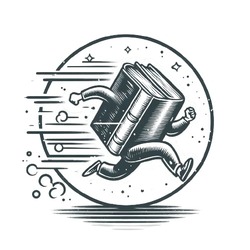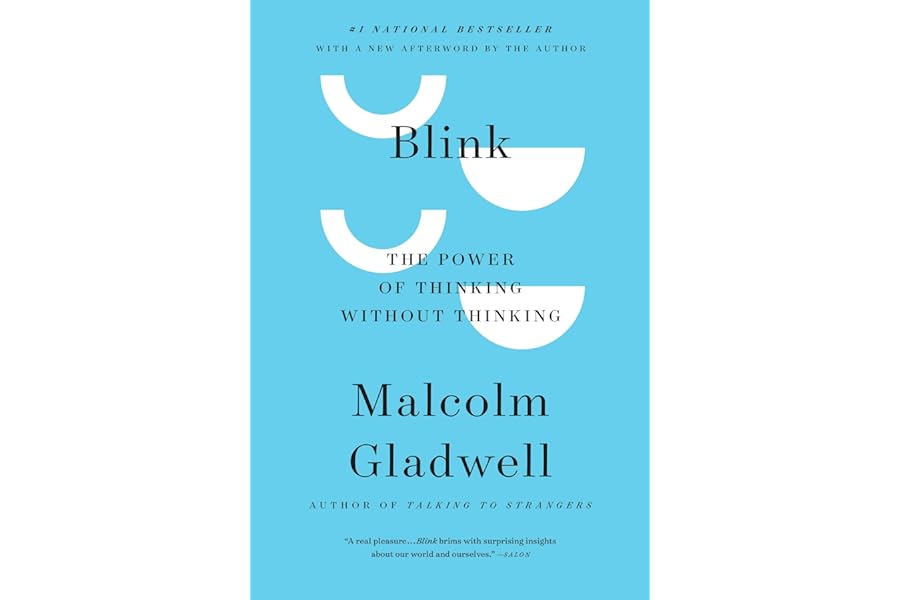One sentence summary:
Blink: The Power of Thinking Without Thinking’ by Malcolm Gladwell explores the power and limitations of our instinctive, intuitive ‘blink’ decisions, and how they can both help and hinder us in various situations.
Book Genre:
Non-fiction, popular psychology, self-help.
Main Topic of the Book:
The book examines the role of intuition and snap judgments in decision-making and how they can be both beneficial and harmful.
Key Ideas:
- Our subconscious mind is capable of processing large amounts of information and making quick decisions based on past experiences and patterns.
- Some decisions are better made with minimal information, whereas others may require more time and contemplation.
- Our biases and cultural conditioning can influence our snap judgments and lead to errors in decision-making.
- Understanding and controlling our subconscious biases can help us make better snap judgments.
- The ‘locked door’ phenomenon illustrates how our intuition can be hindered by outside influence and distractions.
- Practice and expertise can refine our intuition, making it more accurate and reliable.
Main Parts of the Book:
Introduction
The author presents the concept of ‘thin-slicing’ – our ability to make quick, accurate judgments based on small amounts of information.
The Theory of Thin Slicing
Gladwell explains the different factors that influence our snap judgments, such as experience, context, and cultural conditioning.
The Locked Door
This section explores the idea of how too many options or external distractions can hinder our intuition and decision-making abilities.
The Warren Harding Error
The author highlights the dangers of snap judgments based on preconceived notions and stereotypes, using the example of the 29th US president, Warren Harding.
Listening with Your Eyes
The book delves into the world of facial expressions and body language and how they can reveal more about a person than their words.
The Theory of the Mystical Number Seven
Gladwell discusses the concept of ‘thin-slicing’ becoming unreliable when too much information is presented, using the ‘mystical’ number seven as an example.
Kenna’s Dilemma
This chapter examines the unfortunate consequences of our snap decisions when we have incomplete or misleading information.
Seven Seconds in the Bronx
The author looks at the story of Amadou Diallo’s tragic death and how our snap judgments are influenced by our cultural conditioning and biases.
Paul Ekman’s Discovery
Gladwell introduces the work of Paul Ekman and his findings on how facial expressions and emotions are universally recognized.
Listening to Doctors
This section explores how doctors’ intuition can be honed through experience and how external factors can lead to errors in diagnosis.
Conclusion
The author concludes by emphasizing the importance of understanding our snap judgments and learning to control our impulses and biases for better decision-making.
Key Takeaways:
- Intuition and snap judgments can be accurate and beneficial, but they can also be influenced by biases and external factors.
- Understanding and controlling our biases can help us make better snap judgments.
- Expertise and practice can refine our intuition and make it more reliable.
- External distractions and too much information can hinder our intuition and lead to errors in decision-making.
- Our cultural conditioning and biases can influence our snap judgments and lead to stereotypes and misconceptions.
Author’s Background and Qualifications:
Malcolm Gladwell is a Canadian journalist and author who is known for his best-selling books that blend psychology, sociology, and other social sciences with storytelling. He has previously worked as a staff writer for The New Yorker and has written several other popular books, including Outliers and The Tipping Point.
Target Audience:
The book is aimed at a general audience interested in understanding the power of intuition and snap judgments. It may also appeal to those involved in fields such as psychology, sociology, and decision-making.
Publisher and First Publication Date:
Blink: The Power of Thinking Without Thinking was published by Little, Brown and Company in 2005.

